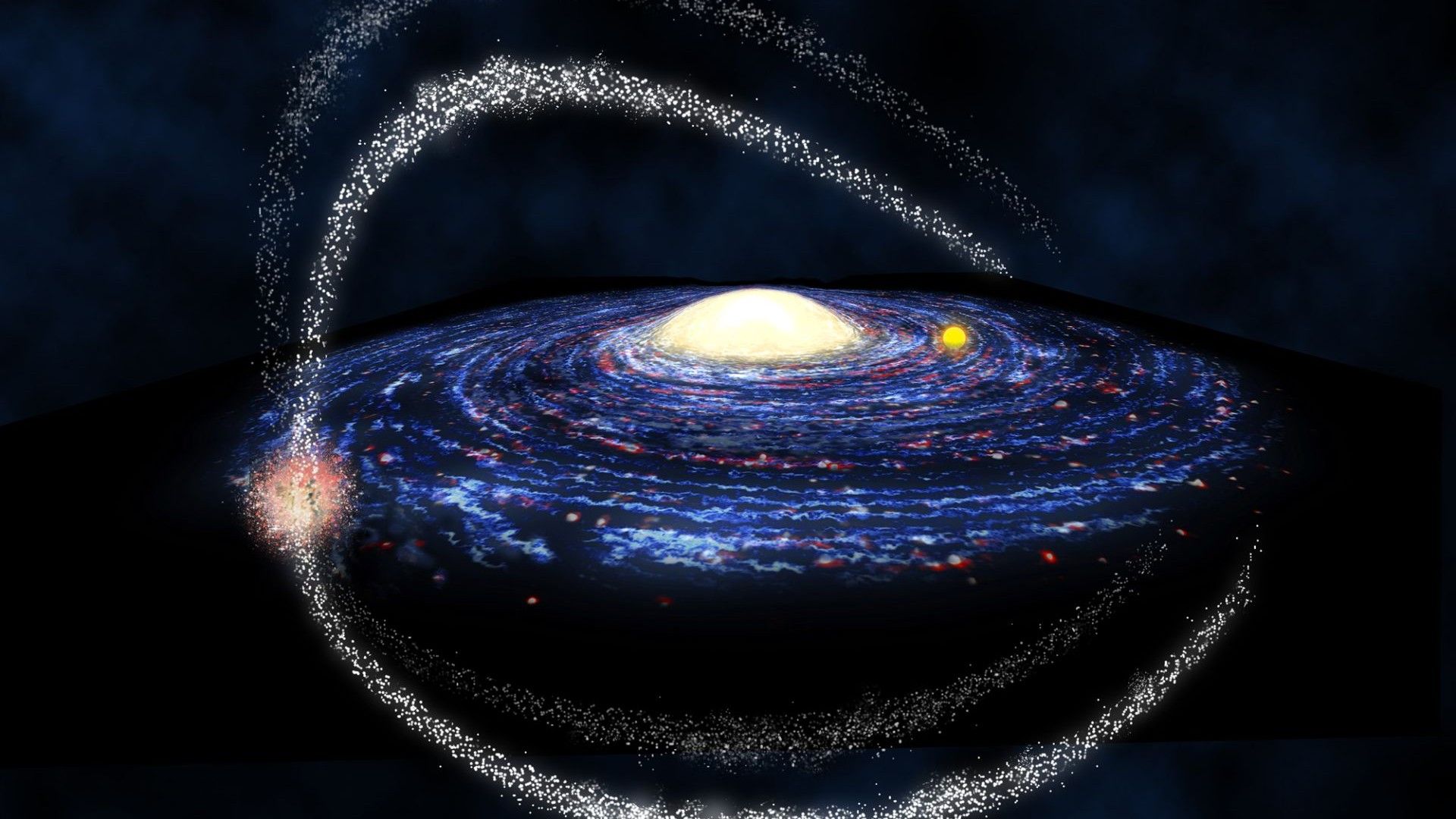Dead stars in Milky Way's companion galaxy cause mysterious gamma-ray cocoon
By Robert Lea published about 4 hours ago
The Fermi bubbles are massive structures extending from the Milky Way, reaching 50,000 light-years in length.

Artist's concept of the four tails of the Sagittarius dwarf galaxy (orange clump on left of the image) orbiting the Milky Way. The bright yellow circle to the right of the Milky Way's center is our sun (not to scale). (Image credit: Amanda Smith, Institute of Astronomy, University of Cambridge)
Mysterious ultrabright gamma-ray emissions in the giant bubbles blown out by our galaxy may finally have an explanation.
Researchers used data from the Gaia and Fermi space telescopes to search through the Fermi bubbles, a pair of colossal hourglass-shaped bubbles that extend from the poles of the Milky Way and span 50,000 light-years, to trace the source of the very bright gamma-ray emission spots.
They discovered that one of the brightest of these spots, dubbed the "Fermi cocoon," located in the southern bubble, was caused by emissions from rapidly spinning dead stars called pulsars in the Milky Way's satellite galaxy Sagittarius. The finding could shed light on how these collapsed dead stars act as cosmic particle accelerators, blasting out high-energy particles that go on to cause gamma-ray emissions.
Gamma-rays have previously been highlighted as a possible result of dark matter annihilation. But if gamma-rays are the result of particles accelerated by pulsars, they may not be evidence of dark matter.
More:
https://www.space.com/gamma-ray-cocoon-sagittarius-dwarf-galaxy
